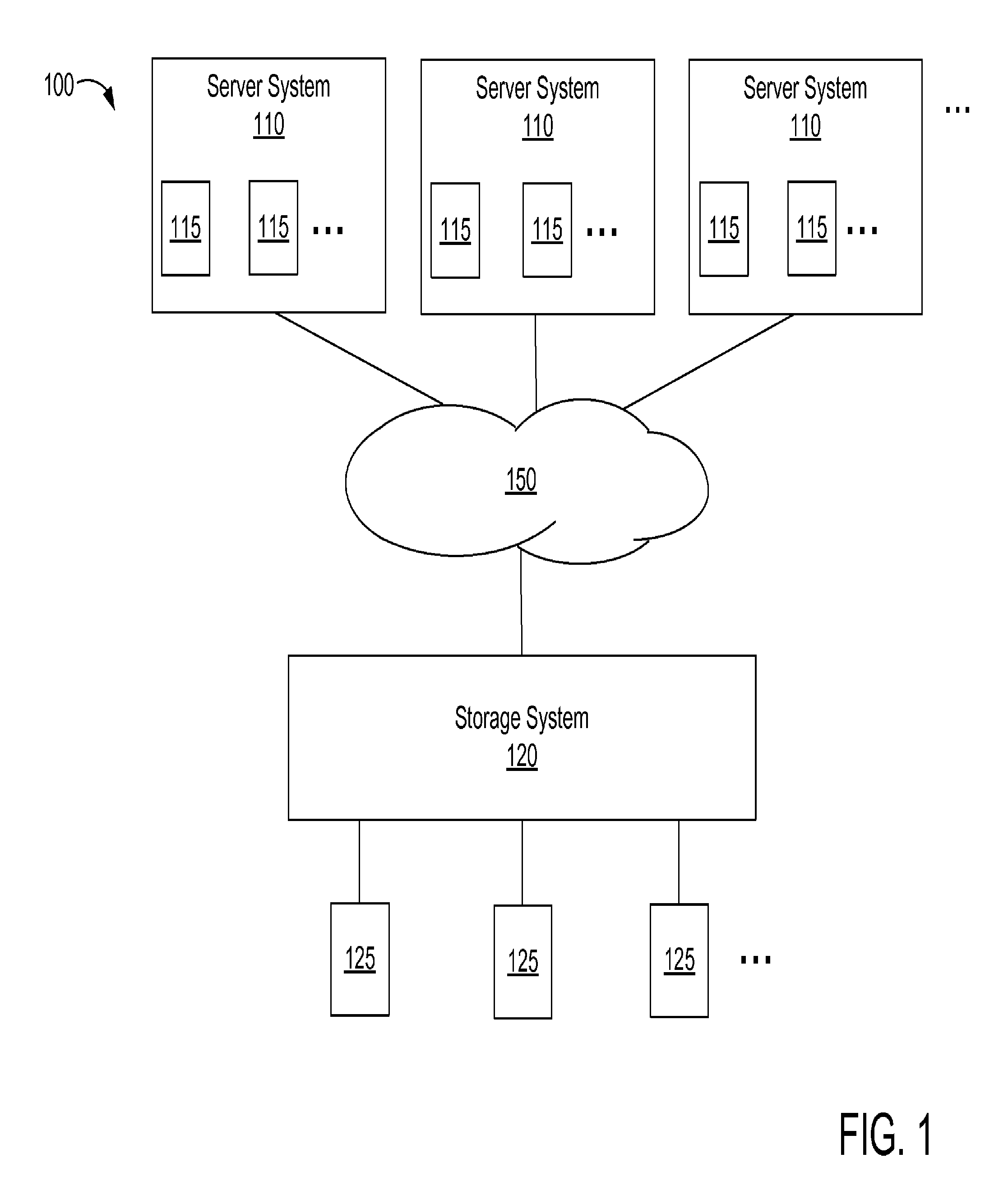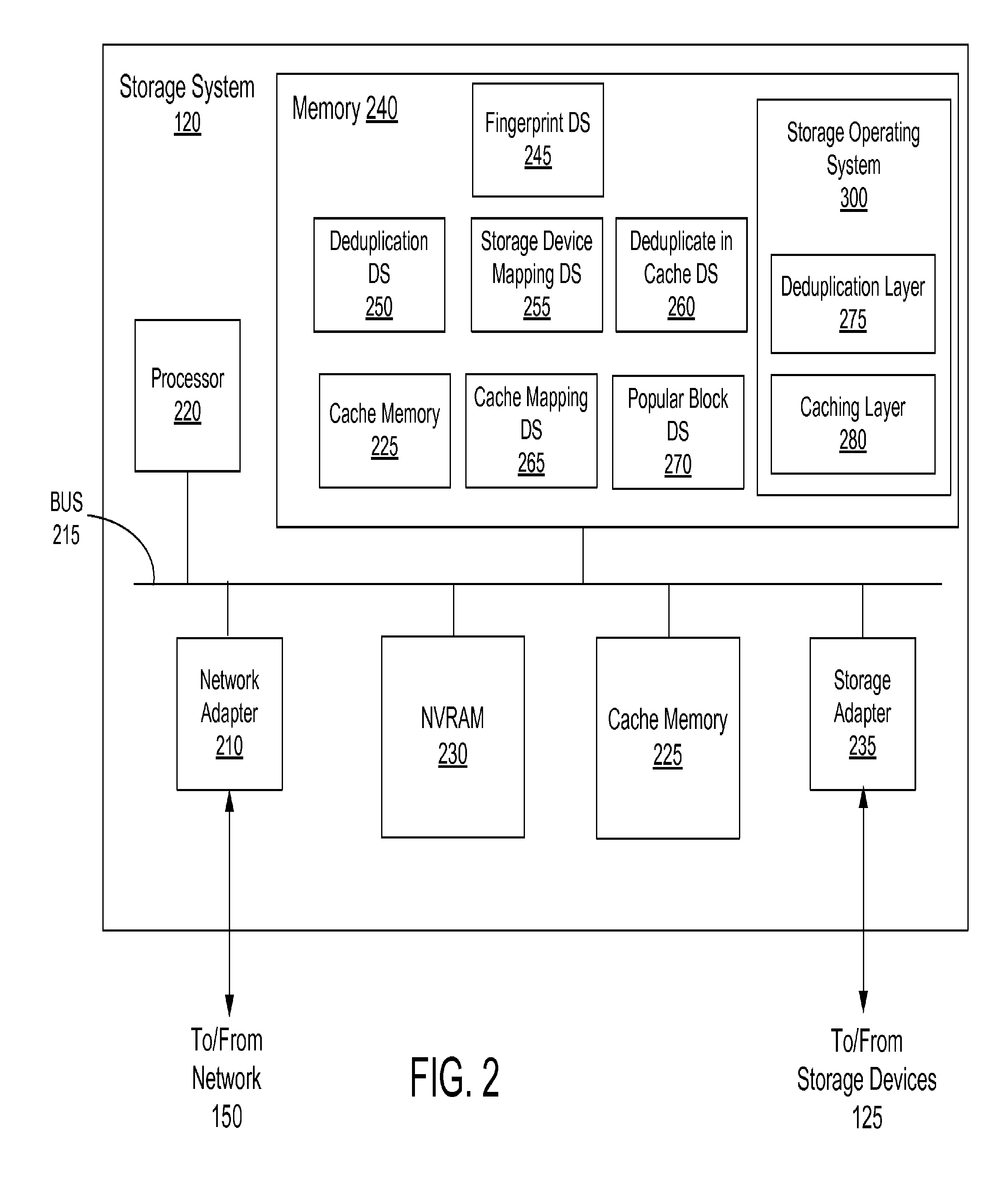Caching and deduplication of data blocks in cache memory
a data block and cache memory technology, applied in the field of storage systems, can solve the problems of not performing the deduplication processing of redundant data blocks in cache memory, the further deduplication of data blocks and the storage savings in the cache memory are not realized by conventional deduplication methods, etc., and achieve the effect of high number of accesses, storage savings, and storage savings
- Summary
- Abstract
- Description
- Claims
- Application Information
AI Technical Summary
Benefits of technology
Problems solved by technology
Method used
Image
Examples
Embodiment Construction
[0048]In the following description, numerous details are set forth for purpose of explanation. However, one of ordinary skill in the art will realize that the embodiments described herein may be practiced without the use of these specific details. In other instances, well-known structures and devices are shown in block diagram form in order not to obscure the description with unnecessary detail.
[0049]The description that follows is divided into 8 sections. Section I describes terms used herein. Section II describes a storage system environment using caching and deduplication. Section III describes deduplication on storage devices based on threshold number of sequential blocks. Section IV describes deduplication of data on storage devices and cache memory. Section V describes caching mechanisms and methods. Section VI describes an overview of deduplication based on block popularity. Section VII describes offline deduplication on storage devices and cache memory based on block popular...
PUM
 Login to View More
Login to View More Abstract
Description
Claims
Application Information
 Login to View More
Login to View More - R&D
- Intellectual Property
- Life Sciences
- Materials
- Tech Scout
- Unparalleled Data Quality
- Higher Quality Content
- 60% Fewer Hallucinations
Browse by: Latest US Patents, China's latest patents, Technical Efficacy Thesaurus, Application Domain, Technology Topic, Popular Technical Reports.
© 2025 PatSnap. All rights reserved.Legal|Privacy policy|Modern Slavery Act Transparency Statement|Sitemap|About US| Contact US: help@patsnap.com



